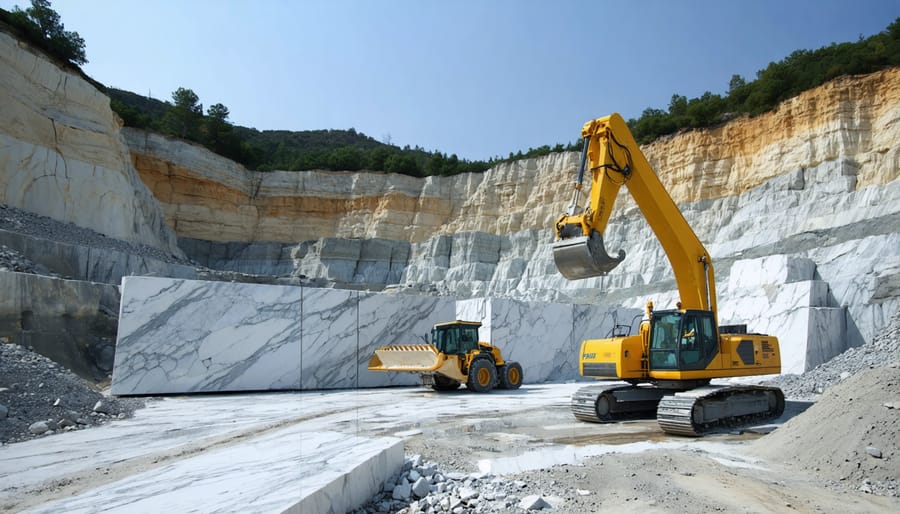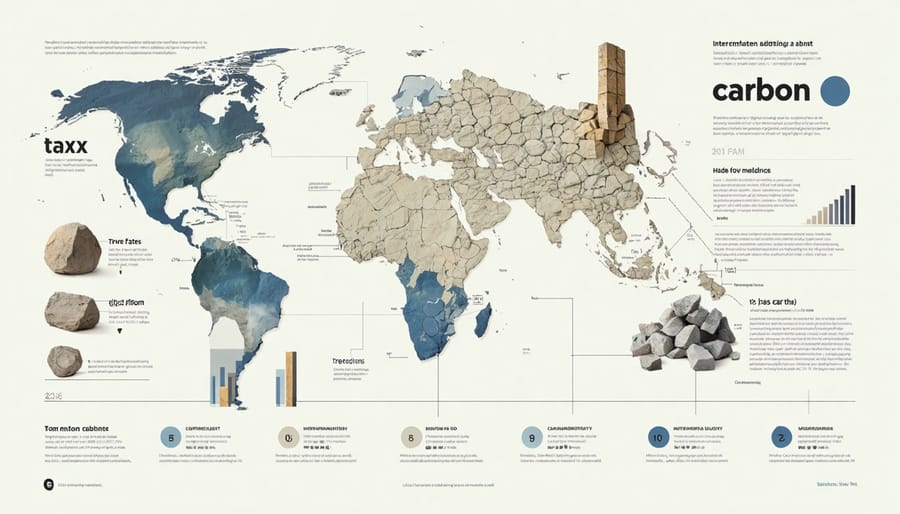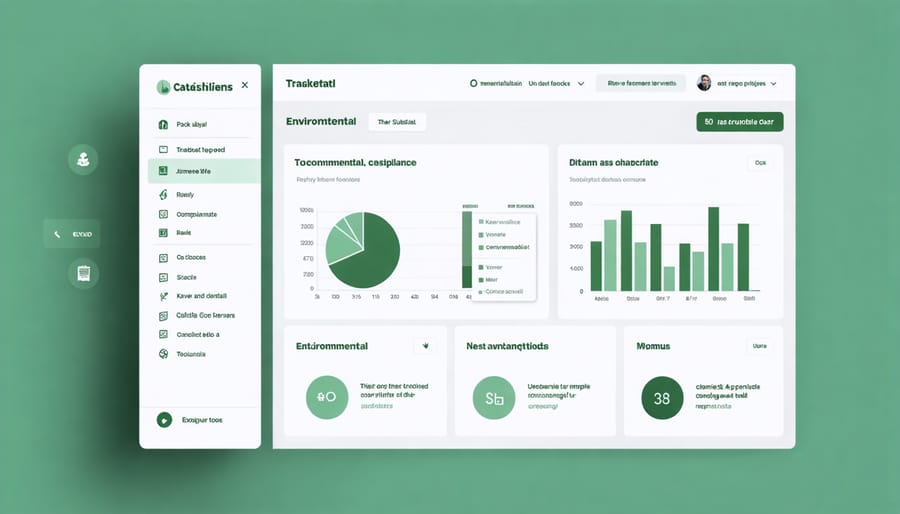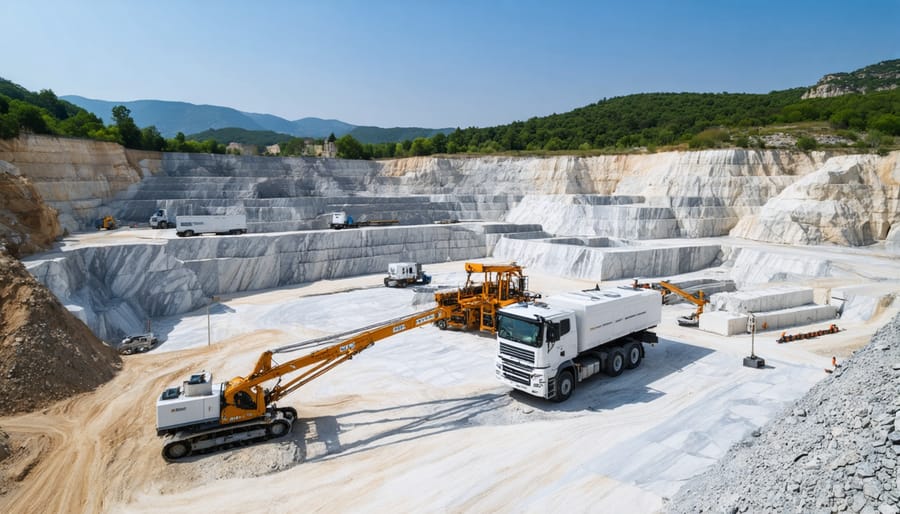Environmental taxes represent a powerful economic instrument reshaping the natural stone industry’s approach to sustainability and resource management. By placing a direct cost on environmental impact, these fiscal measures incentivize businesses to adopt cleaner production methods and more sustainable practices throughout the stone extraction, processing, and distribution chain.
As governments worldwide intensify their focus on climate change mitigation, environmental taxes have emerged as a crucial mechanism for achieving carbon reduction targets while generating revenue for ecological initiatives. For the natural stone sector, these taxes typically encompass carbon emissions, waste management, quarry rehabilitation, and water usage – creating a comprehensive framework that addresses the industry’s environmental footprint.
Understanding and adapting to environmental tax structures has become essential for stone industry stakeholders, from quarry operators to fabricators. These taxes not only influence operational costs but also drive innovation in sustainable extraction methods, waste reduction technologies, and eco-friendly processing techniques. Forward-thinking companies now view environmental taxation not as a burden but as a catalyst for competitive advantage through improved efficiency and environmental stewardship.
Understanding Environmental Tax in the Stone Industry
What Qualifies as Environmental Tax?
Environmental tax in the stone industry encompasses levies imposed on activities that impact the environment during extraction and processing of natural stone. These taxes typically apply to resource consumption, waste generation, and emissions produced throughout the stone production cycle.
Key qualifying factors include carbon emissions from quarrying equipment and transportation, water usage in processing operations, and waste material management. The tax may also cover land use impacts, particularly in quarrying operations that affect local ecosystems.
Specific activities subject to environmental taxation include:
– Energy consumption in extraction and processing
– Water usage in cutting and polishing operations
– Waste disposal from stone processing
– Dust emissions from quarrying and fabrication
– Land rehabilitation requirements
– Transportation-related emissions
The tax rate often varies based on the environmental impact level and local regulations. Some jurisdictions offer incentives or tax reductions for companies implementing sustainable practices, such as water recycling systems or energy-efficient equipment.
Companies must maintain detailed records of their environmental impact metrics and resource consumption to accurately assess their tax obligations and identify opportunities for reduction through improved practices.

Global Environmental Tax Standards
Global environmental tax policies vary significantly across countries, though international frameworks like the Paris Agreement influence their development. The European Union leads with its standardized carbon pricing system, while countries like Norway and Sweden implement comprehensive carbon taxes. In the natural stone industry, these variations affect import-export dynamics and production costs across different regions.
Many nations follow OECD guidelines for environmental taxation, which recommend policies based on the “polluter pays” principle. However, implementation differs based on local economic conditions and environmental priorities. Some countries offer tax incentives for sustainable practices in stone quarrying and processing, while others impose stricter penalties for environmental impact.
Recent trends show increasing harmonization of environmental tax standards, particularly in trading blocs, to prevent competitive disadvantages and carbon leakage. This standardization helps create a more predictable operating environment for international stone suppliers and manufacturers.
Environmental Tax Impact on Stone Import/Export

Carbon Border Adjustments
Carbon border adjustments are emerging as a significant factor influencing the global market impact on stone supply and pricing. These tariffs aim to level the playing field between countries with strict environmental regulations and those with more lenient standards. For natural stone importers, these adjustments often translate into additional costs based on the carbon footprint associated with quarrying, processing, and transportation.
Countries implementing these measures typically assess fees based on the embedded carbon content of imported stone products. Factors considered include energy consumption during extraction, processing efficiency, and shipping distances. For example, marble imported from countries using coal-powered processing facilities may face higher tariffs compared to stone from regions utilizing renewable energy sources.
These adjustments are reshaping procurement strategies within the stone industry. Many suppliers are now prioritizing partnerships with quarries and processors that demonstrate strong environmental practices to minimize carbon-related tariffs. This shift has led to increased transparency in supply chains and growing investment in sustainable extraction and processing technologies, ultimately benefiting both the environment and long-term cost stability.
Trade Agreement Implications
Environmental taxes interact significantly with existing trade agreements, often requiring careful navigation of international commerce regulations. Countries implementing these taxes must ensure compliance with World Trade Organization (WTO) rules and bilateral trade agreements. For natural stone industries, understanding natural stone import taxes alongside environmental levies is crucial for maintaining competitive market positions.
Many trade agreements now include specific provisions for environmental taxation, recognizing the global shift toward sustainable practices. These provisions often allow countries to implement environmental taxes without violating free trade commitments, provided they apply equally to domestic and imported products. However, challenges can arise when environmental taxes create perceived trade barriers or competitive disadvantages.
Companies operating internationally must consider how environmental taxes affect their supply chains and pricing strategies. Some trade agreements offer mechanisms for tax harmonization or mutual recognition of environmental standards, helping businesses navigate cross-border transactions more efficiently. Understanding these interactions is essential for maintaining compliance while optimizing operational costs in the natural stone industry.
Cost Implications for Industry Stakeholders
Quarry Operations
Environmental taxes significantly impact quarry operations through various cost mechanisms. Operators face levies on extraction activities, typically calculated per ton of stone removed, which directly affects production costs. These taxes aim to encourage sustainable mining practices and compensate for environmental impact.
Processing facilities also encounter additional charges related to energy consumption, water usage, and waste management. Many jurisdictions implement tiered tax structures, where higher rates apply to operations exceeding certain environmental thresholds. This system incentivizes quarries to adopt cleaner technologies and more efficient processing methods.
The tax burden often leads to operational adjustments, including investments in dust suppression systems, water recycling facilities, and energy-efficient equipment. While these improvements require initial capital, they can result in long-term cost savings and tax reductions. Successful quarry operators typically incorporate these environmental tax considerations into their business planning, balancing compliance costs with operational efficiency to maintain competitive pricing in the market.
Distribution and Retail
Environmental taxes significantly influence pricing structures throughout the natural stone distribution chain. When manufacturers face increased taxation, these costs typically cascade down to distributors and retailers, ultimately affecting consumer prices. The impact varies depending on market conditions and competitive dynamics, with some businesses absorbing partial costs to maintain market share while others pass them entirely to customers.
Supply chain adaptations often emerge as businesses seek to optimize their operations and minimize tax exposure. For instance, distributors might consolidate shipments or restructure delivery routes to reduce their carbon footprint and associated tax burden. This relationship between environmental taxation and market volatility in stone prices creates both challenges and opportunities for industry stakeholders.
Retailers increasingly leverage eco-friendly practices and tax-efficient distribution methods as competitive advantages, particularly in markets where environmental consciousness drives purchasing decisions. This shift has led to the emergence of new business models focused on sustainable distribution practices and transparent pricing structures that clearly communicate environmental tax components to end consumers.
Compliance and Best Practices
Record Keeping Requirements
Proper record keeping is essential for environmental tax compliance in the natural stone industry. Businesses must maintain detailed documentation of their environmental impact assessments, emissions data, and waste management practices for a minimum of six years. Key records include energy consumption logs, carbon emission calculations, waste disposal receipts, and transportation documentation.
Organizations should implement digital tracking systems to monitor and record relevant environmental metrics. This includes maintaining spreadsheets or specialized software for tracking carbon footprints, water usage, and waste generation. Regular audits of these records help ensure accuracy and compliance with reporting requirements.
Documentation should also include proof of tax payments, relevant permits, and certificates related to environmental compliance. Companies must retain records of any tax credits or exemptions claimed, along with supporting evidence. It’s recommended to establish a systematic filing system, whether physical or digital, to organize these documents for easy retrieval during tax audits or regulatory inspections.

Tax Planning Strategies
Several effective strategies can help businesses manage their environmental tax obligations while promoting sustainability. Regular environmental audits help identify opportunities for tax credits and deductions related to eco-friendly practices. Companies can benefit from accelerated depreciation on green equipment investments and claim credits for renewable energy implementations.
Maintaining detailed documentation of environmental improvements and their associated costs is crucial for tax reporting. Businesses should consider timing large sustainable investments to maximize tax benefits within specific fiscal years. Working with tax professionals who specialize in environmental regulations can help identify overlooked opportunities and ensure compliance.
Strategic planning might include phasing sustainability projects to optimize tax benefits, bundling improvements to meet minimum threshold requirements, and leveraging regional incentive programs. Companies can also participate in carbon credit trading programs where available, potentially offsetting their environmental tax burden while contributing to sustainability goals.
Small businesses should particularly focus on available local and state-level environmental tax incentives, which often provide more accessible benefits than federal programs.
Environmental taxes have emerged as a crucial tool in promoting sustainable practices within the natural stone industry. As we’ve explored, these fiscal measures serve multiple purposes: reducing environmental impact, encouraging innovation in eco-friendly extraction methods, and generating revenue for environmental protection initiatives. The implementation of such taxes has already shown promising results, with many companies adopting cleaner technologies and more efficient production processes.
Looking ahead, environmental taxation is likely to become more sophisticated and targeted. Industry experts anticipate the development of more nuanced tax frameworks that better reflect the varying environmental impacts of different stone extraction and processing methods. This evolution will likely include incentives for companies that exceed sustainability benchmarks and stricter penalties for those falling short.
For industry stakeholders, staying informed about these evolving regulations and preparing for future changes will be essential. Success will depend on balancing compliance with operational efficiency while maintaining competitiveness. As environmental concerns continue to shape policy decisions, companies that proactively adapt their practices and embrace sustainable solutions will be better positioned for long-term success in the natural stone market.










